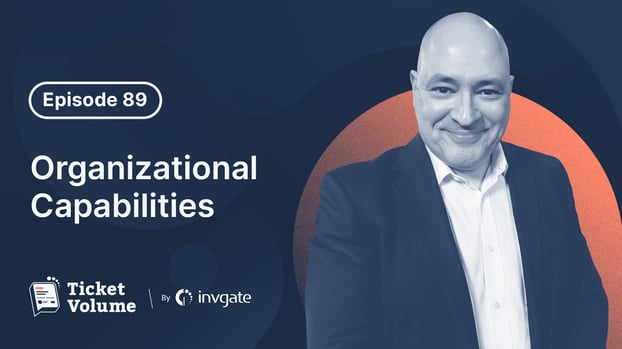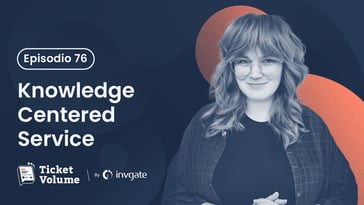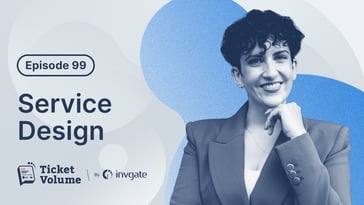On the latest episode of Ticket Volume - IT Podcast, host Matt Beran sits down with Kenneth "Kengon" Gonzalez, a speaker, advisor, and former Gartner analyst. With his extensive experience, Ken offers deep insights into the evolving world of IT Service Management (ITSM), the future of organizational capabilities, and what it means to truly support business outcomes.
But the conversation doesn’t stop there! Ken also challenges some long-standing ideas about ITSM, questions whether maturity models still hold value, and urges leaders to rethink how their organizations deliver value to customers.
In this blog post, we’ll dive into the key points from the episode, focusing on how organizations can sharpen their capabilities, whether ITSM is truly dead, and why the famous Gartner Magic Quadrant was retired. Here are the highlights of episode 89 of Ticket Volume.
What are organizational capabilities? A technical definition
Organizational capabilities refer to the unique skills, resources, and processes that a company leverages to achieve its objectives and deliver value to its customers. These capabilities act as the building blocks of an organization’s capacity to adapt, compete, and innovate within its market.
They are not simply technical tools or software but rather an integrated set of competencies that span technology, human resources, processes, and structures, all designed to align with and support the organization’s mission and goals. Strong organizational capabilities enable businesses to enhance efficiency, respond to market demands, and deliver consistent value, ultimately forming the backbone of their competitive advantage.
The importance of organizational capabilities
Now that we know what organizational capabilities are from a technical point of view, it’s time to deep dive into the concept. One of the most critical aspects discussed in this episode is how we think about organizational capabilities.
Ken emphasizes that every organization has a mission, and everyone within that organization contributes to fulfilling it. The capability of an organization is defined by how well it can serve its customers.
|
"Capabilities aren't just about products or tools—they're about the organization’s ability to serve and meet customer needs." Kenneth Gonzalez |
For organizations to improve, they must first define their capabilities—not in terms of the tools they use, but in how they deliver value. This holistic view brings together people, technology, and processes, challenging the traditional view that "products have capabilities."
Instead, Ken stresses, organizations have capabilities, and those capabilities are what make or break their ability to fulfill their mission.
Types of organizational capabilities
Let’s get back for a minute to the theory. There are many types of organizational capabilities, each essential to an organization’s success but varying in importance depending on the company’s unique goals and market demands. Here are some of the most common and impactful types:
1. Strategic capabilities
Strategic capabilities are the abilities that enable an organization to set clear goals and develop plans to achieve them. These capabilities involve market analysis, competitive positioning, and resource allocation to drive long-term success.
They are crucial in helping companies anticipate changes, respond to trends, and make data-driven decisions that support the organization’s mission and vision.
2. Operational capabilities
Operational capabilities encompass the processes and efficiencies that allow an organization to deliver products or services reliably and at scale. This type involves everything from supply chain management to resource utilization and quality control.
Well-developed operational capabilities ensure that the organization meets its performance standards consistently and is able to adapt quickly to production or service demands.
3. Customer-centric capabilities
Customer-centric capabilities refer to the organization’s ability to understand and meet customer needs, thereby enhancing customer satisfaction and loyalty. These include market research, customer relationship management (CRM) practices, and customer support services.
Effective customer-centric capabilities help organizations build strong, lasting relationships with their customers by delivering personalized and timely service. Ken highlights this one as especially important.
4. Innovation capabilities
Innovation capabilities are the organization’s ability to foster creativity, embrace new technologies, and pursue continuous improvement. These capabilities are critical for adapting to market changes, exploring new revenue streams, and staying ahead of competitors.
They typically involve research and development (R&D), cross-functional collaboration, and fostering a culture of innovation.
5. Human resource capabilities
Human resource capabilities focus on acquiring, developing, and retaining talent that supports the organization’s goals. This includes recruitment processes, employee development programs, performance management, and organizational culture.
By optimizing HR capabilities, organizations can build a motivated and skilled workforce that drives their mission forward.
Examples of organizational capabilities
Organizational capabilities are applied in various ways to support specific outcomes. Here are examples of some of the most commonly developed and impactful capabilities:
1. Effective decision-making processes
A robust decision-making capability enables an organization to make informed, timely choices that align with its goals. This involves data analysis, scenario planning, and structured decision-making frameworks.
By refining this capability, organizations can respond quickly to opportunities and risks, maintaining agility and competitive edge.
2. Data analytics and insights generation
Data analytics capability allows organizations to collect, analyze, and act on data from various sources, generating valuable insights that guide business strategy.
This capability supports everything from marketing strategies to operational improvements, helping businesses make evidence-based decisions and better understand customer behavior.
3. Cross-departmental collaboration
Cross-departmental collaboration capability enables different parts of the organization to work together toward common goals. This includes standardized communication channels, shared project management tools, and collaborative training programs.
Strong collaboration capabilities reduce silos, improve efficiency, and foster innovation across teams.
4. Scalability and adaptability
Scalability capability refers to an organization’s ability to expand its operations efficiently as demand increases. This involves flexible infrastructure, scalable technology, and adaptable processes that allow growth without sacrificing quality or service consistency.
Scalability ensures that an organization can meet increasing demands and capitalize on growth opportunities.
5. Continuous learning and skill development
Continuous learning capability ensures that employees have ongoing opportunities to develop their skills and adapt to changes in the industry. This includes professional development programs, mentorship opportunities, and a culture that encourages curiosity and learning.
By investing in skill development, organizations foster a knowledgeable and adaptable workforce that can respond to new challenges effectively.

How to think about and improve capabilities
Improving organizational capabilities begins with understanding what customers actually need, not just following "best practices". Ken criticizes the traditional ITSM models that encourage rigid structures, urging organizations to be more customer-centric.
According to Ken, the first step to improvement is honest self-assessment. He encourages businesses to profile what they deliver, determine what customers really value, and make sure there’s a mutual understanding between what is provided and what is expected. This is where capability mapping becomes crucial. It allows businesses to clearly see the areas they excel in and where they need improvement.
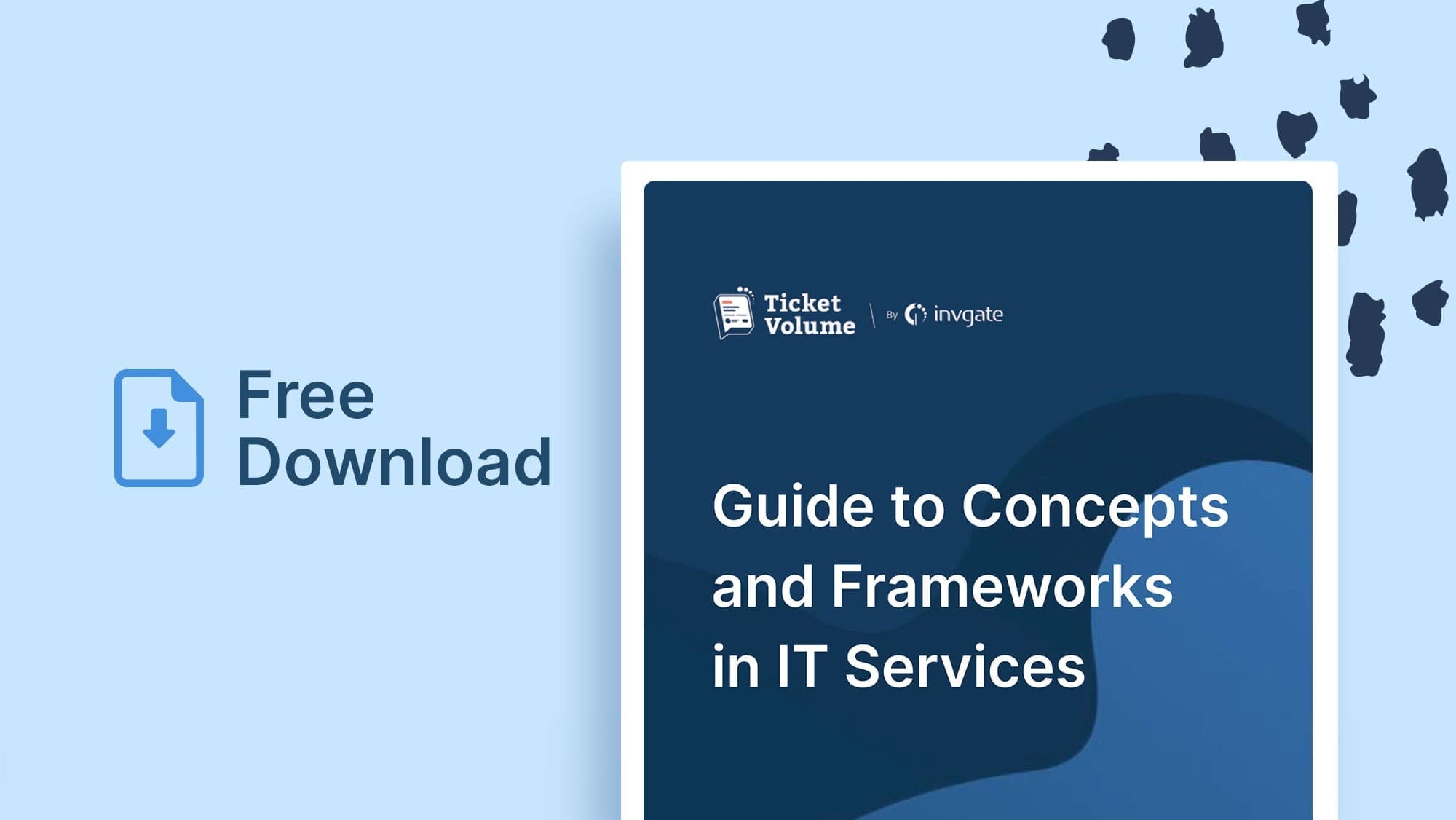
Is IT Service Management dead?
During the podcast, Matt and Ken touch on a rather provocative question: Is ITSM dead? Ken doesn’t shy away from this. He explains how ITSM tools, once considered cutting-edge, are no longer enough to meet the demands of today’s customers.
He recalls his time at Gartner and how he had long advocated for retiring the ITSM Magic Quadrant, pointing out that the market had become too mature. In a bold move, Gartner eventually replaced it with a Market Guide. This change reflects how stagnant the field of ITSM tools had become. "The tools market is growing at 9% annually, which isn’t exactly lighting the world on fire," Ken remarks.
Ken argues that the ITSM world needs a shift away from metrics like ticket volume and SLA adherence. Customers don’t care about tickets; they care about services that don’t fail. He calls for a transition to outcome-based delivery, where organizations focus on reducing failures and delivering seamless experiences.
The role of the Gartner Magic Quadrant
Ken’s reflections on the Gartner Magic Quadrant tie into the broader conversation about evolving organizational needs. The Magic Quadrant was once the go-to resource for businesses selecting ITSM tools. But as Ken points out, the tools had become so similar that distinguishing between them was difficult. That’s why Gartner moved to the Market Guide, which highlights new players and different perspectives.
Ken’s stance on this is clear: organizations must stop focusing on the tools and instead start focusing on the capabilities that enable them to deliver what their customers truly need. This shift in thinking is critical as organizations aim to thrive in a competitive, fast-moving landscape.
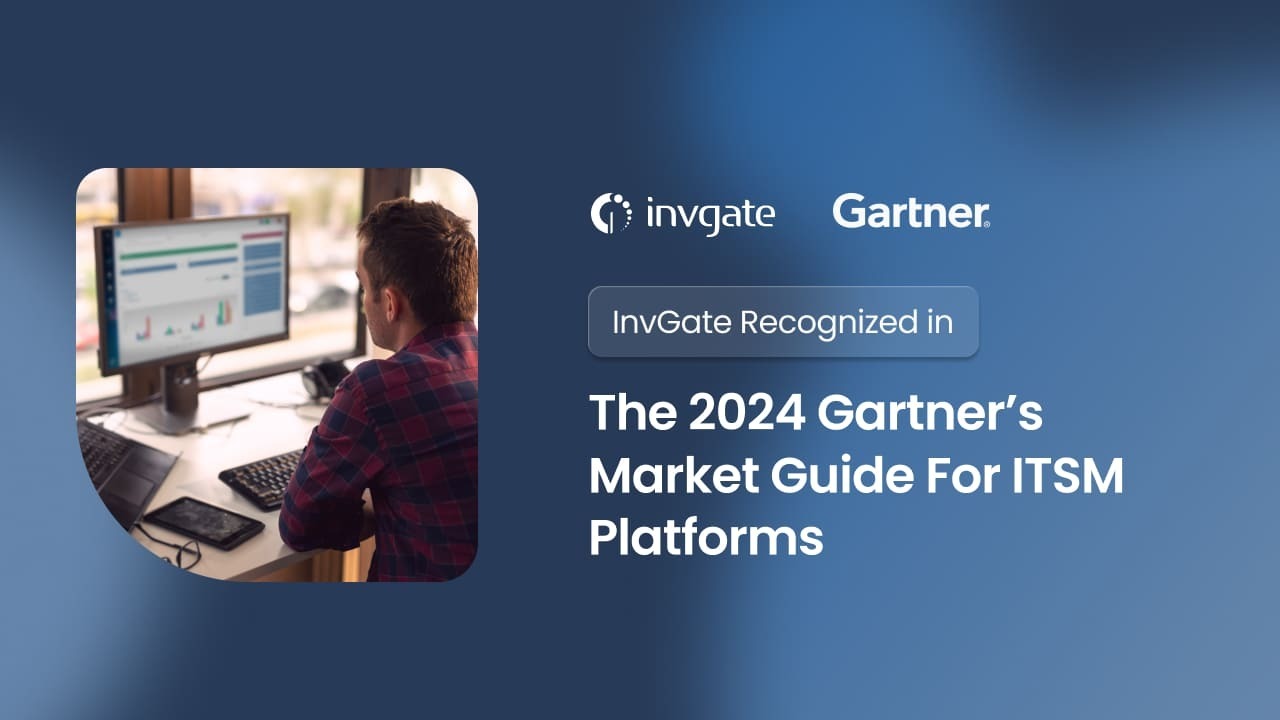
The capability vs. maturity debate
In the podcast, Ken also critiques the concept of maturity models. He argues that many businesses aim for "maturity" without questioning whether their maturity actually serves their customers’ needs.
|
"You can be the most mature organization on the planet, but if your customer hates you, you're toast." Kenneth Gonzalez |
Instead, he suggests a capability-focused approach. Organizations should not aim to be "mature" for the sake of it. Instead, they should aim to develop the right capabilities to serve their specific customer base effectively.
This involves constantly reassessing what’s important to customers and refining their approach accordingly.
From SLAs to XLAs: Meeting the customer at their expectations
As Kenneth explains, Service Level Agreements (SLAs) alone often fall short of capturing the true value an organization delivers to its customers. SLAs measure whether IT services meet specific standards, like uptime or response times, but they rarely address how these services make users feel or how effectively they meet business needs. That’s where Experience Level Agreements (XLAs) come into play.
Unlike SLAs, XLAs are designed to capture the overall user experience by focusing on metrics that reflect customer satisfaction, like Customer Satisfaction Score, and service impact. This shift acknowledges that simply meeting technical standards isn’t enough; organizations need to prioritize a positive, seamless user experience to foster long-term loyalty and satisfaction.
However, Ken cautions against jumping straight from SLAs to XLAs without truly understanding what drives the desired user experience. Rushing to implement XLAs can create "vanity metrics" that look impressive on paper but fail to improve actual outcomes.
To bridge this gap, he advocates for a producer-consumer alignment that ensures any experience metrics are meaningful and actionable. By thoroughly mapping out the customer journey and understanding users’ needs, organizations can make XLAs a powerful tool for continuous improvement rather than just another metric.
Conclusion: Evolving your organization’s capabilities
This episode of Ticket Volume offers a treasure trove of insights for any organization looking to improve how it serves its customers. As Ken highlights, it’s not about the tools you use; it’s about aligning your organization’s capabilities with your customer’s needs.
From challenging the ITSM status quo to emphasizing customer-centricity, Kenneth Gonzalez brings a refreshing perspective on how organizations can evolve to meet the ever-changing demands of the market. And as always, it starts with thinking differently.
You can find the full episode on Apple Podcasts, Spotify, YouTube, or your favorite podcast platform.
Frequently Asked Questions (FAQs)
1. What are organizational capabilities?
Organizational capabilities refer to the skills, resources, and processes that allow a company to deliver its mission and serve its customers effectively. It encompasses more than just tools or products—it's about how well an organization can meet customer needs.
2. Why did Gartner retire the ITSM Magic Quadrant?
Gartner retired the Magic Quadrant for ITSM tools because the market had become too mature, making it difficult to differentiate between vendors. They replaced it with a Market Guide, which includes newer players and provides broader perspectives.
3. Is ITSM still relevant?
A: While ITSM isn't "dead," traditional ITSM tools may no longer fully meet the needs of modern businesses. The focus is shifting toward reducing failures and delivering seamless, customer-focused experiences.
4. How can businesses improve their capabilities?
Businesses can improve their capabilities by first assessing what their customers need, aligning their services to meet those needs, and continuously refining their processes and resources to deliver better outcomes.












